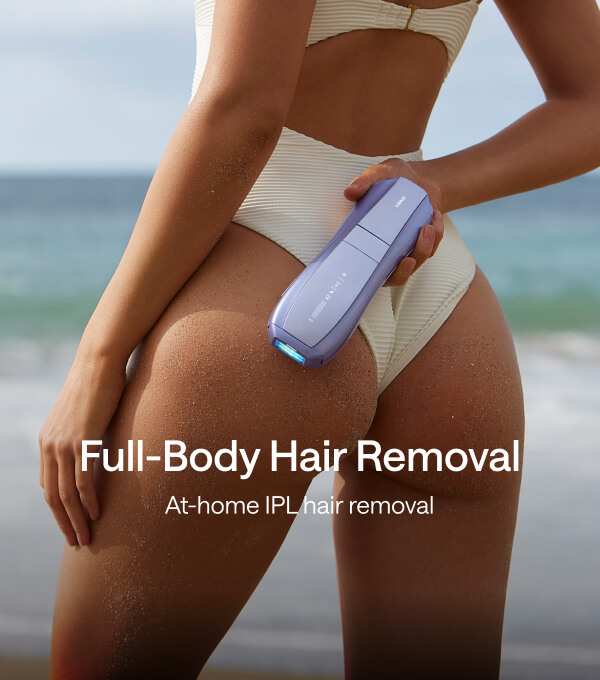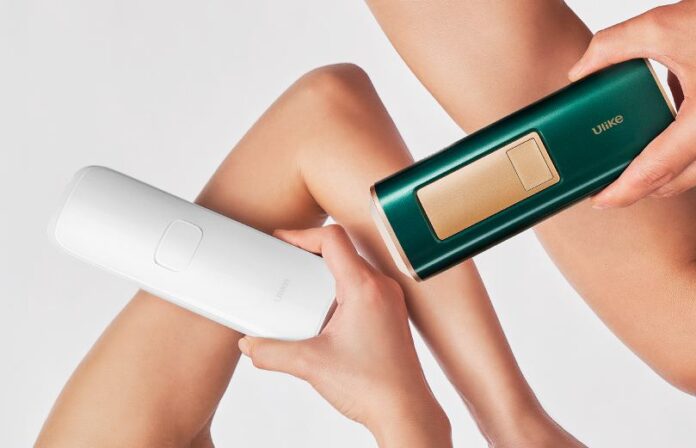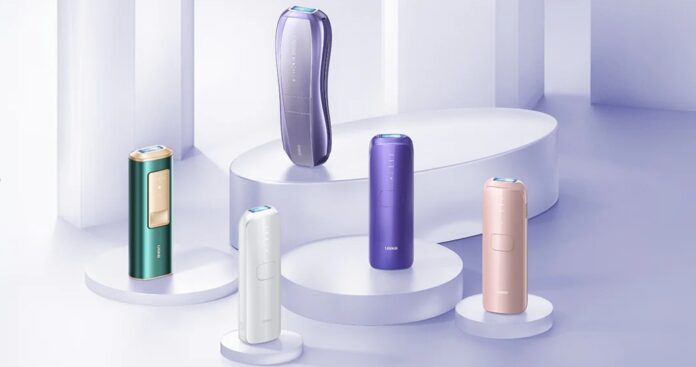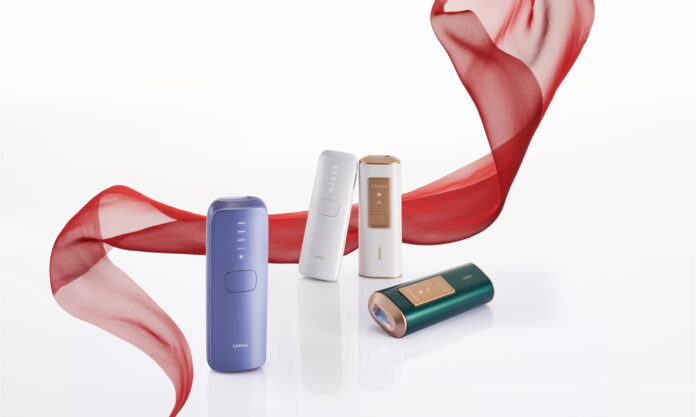In recent years, many top manufacturers have developed small, affordable laser and Intense Pulsed Light (IPL) systems for home use. These devices allow consumers to perform hair removal treatments from the comfort of their homes without the need for professional services. However, with the convenience of at-home treatments comes the important question: Is at-home laser hair removal safe?
While these devices are designed to be user-friendly, it’s essential to understand the science behind them to assess their safety, efficiency, and necessary precautions, so you can make an informed decision as a consumer.
Is At-Home Laser Hair Removal Safe and Efficient? A Scientific Perspective
 Outcomes vs. Safety of At-Home Laser Hair Removal
Outcomes vs. Safety of At-Home Laser Hair Removal
Research has shown that at-home IPL and diode laser devices can provide significant hair reduction after repeated treatments. Results show reductions of 6%–72% in hair growth following treatments over 3–6 months.
Most side effects are mild, such as erythema (redness), while more severe issues like blistering and pigment changes are less common. Notably, studies haven’t reported eye damage or paradoxical hair growth, indicating that at-home laser hair removal devices can be both efficient and safe when used properly.
Efficacy vs. Safety of At-Home Laser Hair Removal
Several studies have evaluated the efficacy and side effects of at-home laser hair removal. One study showed a 53.6% decrease in hair count after a six-month regimen of three treatments every two weeks, with mild side effects like redness and swelling in 25% of participants. Another trial showed a 64% hair reduction after three months of the same treatment regimen, with minimal side effects.
For underarm hair, a study showed an 87% hair reduction after four weekly treatments, with only slight stinging or itching reported by participants.
These results confirm that IPL is generally safe and effective for mild hair removal with minimal side effects.
Skin Tone vs. Safety of At-Home Laser Hair Removal Devices
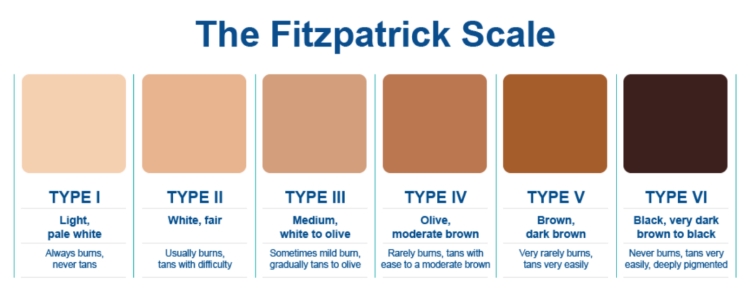 The safety of IPL devices can vary depending on skin type. Before purchasing or using an IPL device, compare your skin tone(s) to the manufacturer’s recommended scale.
The safety of IPL devices can vary depending on skin type. Before purchasing or using an IPL device, compare your skin tone(s) to the manufacturer’s recommended scale.
Darker skin tones (Fitzpatrick types IV–VI) have more melanin, which absorbs more light energy, increasing the risk of burns, hyperpigmentation, and other adverse reactions if the device isn’t properly calibrated. Lighter skin tones (types I–III) are generally safer, as they absorb less light.
Of course, misuse of any IPL device can result in avoidable side effects. For example, many devices come with adjustable intensity levels. If the intensity level is set too high for your particular skin tone, it may result in redness, swelling, or irritation. So always follow the manufacturer’s guidelines, and test the device on a small patch of skin before using it on your whole body.
Devices with built-in skin tone sensors can help reduce the risk of misuse by auto-adjusting the energy levels to suit your skin.
Key Technical Considerations for At-Home Laser Hair Removal
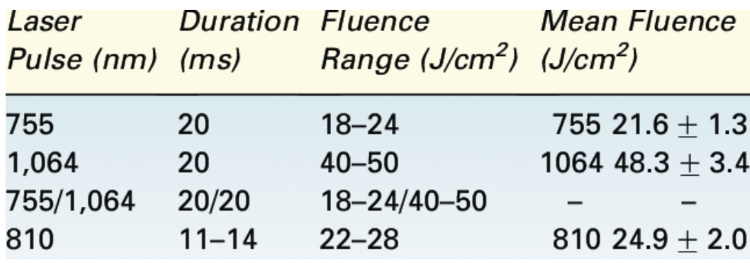
- Wavelength: The wavelength determines how deep the light penetrates the skin. Devices with wavelengths between 600 nm and 1200 nm are most commonly used for hair removal.
- Pulse Duration: The duration of light pulses influences how much heat is generated and how effective the treatment is.
- Energy Levels: Higher energy levels offer better results but carry greater risk, particularly for those with darker skin tones.
Wavelength: How Deep the Light Penetrates
The wavelength determines how deep the light penetrates the skin. Devices with wavelengths between 600 nm and 1200 nm are most commonly used for hair removal.
- Wavelengths in this range are effective because they can penetrate the skin at the right depth to reach the hair follicles, which is essential for destroying the hair at its root.
- The light emitted by the device isn’t a single wavelength; instead, it’s a spectrum that includes wavelengths from 400 nm (visible light) to 1200 nm (infrared), allowing the device to target various skin depths.
The wavelength must be chosen carefully to balance safety and effectiveness. Shorter wavelengths (closer to 600 nm) are generally more suitable for light skin tones, while longer wavelengths (closer to 1200 nm) tend to be better for deeper penetration and darker skin tones, where more melanin is present.
Pulse Duration: The Duration of Light Exposure
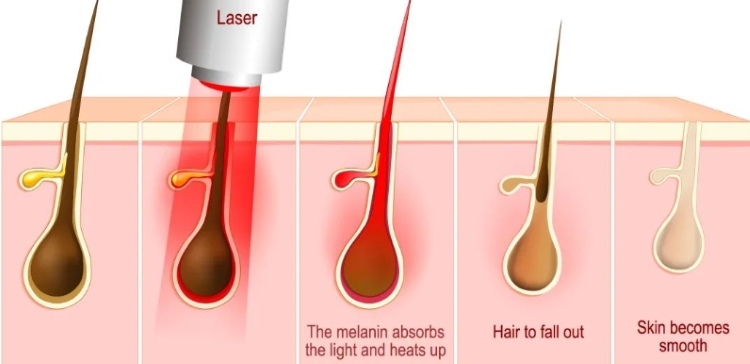 Pulse duration refers to how long the laser light is applied to the skin during each pulse. This is measured in milliseconds (ms) and plays a significant role in the treatment’s effectiveness and safety.
Pulse duration refers to how long the laser light is applied to the skin during each pulse. This is measured in milliseconds (ms) and plays a significant role in the treatment’s effectiveness and safety.
- The ideal pulse duration should be long enough to target the hair follicle and generate enough heat to destroy it, but not so long that it damages surrounding tissue.
- Pulse duration typically ranges from 5 ms to 30 ms for at-home IPL devices. If the pulse is too long, the heat can spread to nearby tissue, increasing the risk of burns or other side effects. Conversely, a pulse that’s too short may not generate enough heat to effectively damage the hair follicle.
For optimal results and minimal side effects, the pulse duration should be tailored to the target hair follicle’s “thermal relaxation time” (TRT), which refers to how quickly the follicle can dissipate heat. The right pulse duration ensures that the follicle absorbs the heat needed to destroy it while protecting the surrounding skin.
Energy Levels (Fluence): How Much Light Is Delivered
Fluence is the amount of light energy delivered to the skin per unit area, typically measured in Joules per square centimeter (J/cm²). The fluence level determines how much heat is generated in the skin.
- Higher fluence levels tend to be more effective at permanently reducing hair growth but come with a higher risk of side effects, especially for those with darker skin tones.
- Typical energy levels for at-home devices range from 3 to 6 J/cm², which is significantly lower than professional devices (which range from 20 to 40 J/cm²). This lower energy ensures safety for home users while still providing some effectiveness.
- If the fluence is too high, it can cause burns, blistering, or other adverse skin reactions. On the other hand, if the fluence is too low, the treatment may not be effective at all.
Therefore, the right fluence level strikes a balance between safety and efficacy, ensuring the light energy is sufficient to disable the hair follicle without causing damage to the skin.
Conclusion
At-home laser hair removal devices can offer effective and convenient hair removal solutions when used correctly. By following safety guidelines, selecting the right device for your skin type, and performing regular patch tests, you can enjoy a smooth transition to smoother skin.
FAQs on At-Home Laser Hair Removal
 Is at-home laser hair removal safe for the eyes?
Is at-home laser hair removal safe for the eyes?
The eyes are particularly sensitive to light exposure, with key structures such as the retina, cornea, lens, and iris being highly vulnerable to damage from intense light. At-home laser devices, which emit light in the 400–1400 nm wavelength range (visible to near-infrared), can pose a risk to the eyes if not used properly. Even the low-power light from a basic laser pointer can focus energy onto the retina, potentially causing permanent damage. This concentrated energy can lead to thermal damage, possibly resulting in peripheral blind spots or even total blindness. Laser exposure above 1400 nm can cause corneal burns, while wavelengths below 400 nm and above 750 nm may lead to photochemical damage, such as cataracts. It’s crucial to protect your eyes during laser hair removal treatments to avoid these risks.
Is at-home laser hair removal safer than professional treatments?
While both professional laser hair removal devices and at-home laser hair removal devices carry the potential for side effects, at-home devices generally have a lower risk due to reduced energy output. Professional treatments, performed by trained specialists, use higher-powered lasers or intense pulsed light, which can lead to temporary irritation, redness, and even more serious side effects like burns or scarring. In contrast, at-home devices typically deliver lower energy, so side effects are often limited to mild redness or irritation. However, these devices are still safe for most users when used according to the manufacturer’s guidelines.
Is at-home laser hair removal safe for pigmented skin lesions?
Laser and IPL treatments should not be used on pigmented skin lesions, such as moles or other melanin-containing areas. The risk of burns and scarring is increased when light-based devices target these areas. Avoid using at-home laser hair removal devices on skin lesions to minimize potential harm.
Is at-home laser hair removal safe for tattoos?
Laser hair removal over tattoos is not recommended. The laser or IPL light can interact with tattoo ink, potentially causing fading, burning, pigment changes, or scarring. Additionally, the absorption of light by the tattoo ink can interfere with the effectiveness of hair removal. It’s best to avoid using these devices on tattooed areas.
When are at-home laser hair removal devices not safe to use?
At-home laser hair removal devices are designed for cosmetic purposes only. They should not be used for individuals with medical conditions that cause abnormal hair growth, such as hypertrichosis (excessive body hair) or hirsutism (excessive hair growth in women, often due to hormonal imbalances). These conditions require medical consultation and treatment from a healthcare professional. Home-use devices should be reserved for those with no underlying medical issues, focusing solely on cosmetic hair removal.
References
- al-Muqarrab, F., al-Suwaidan, S., al-Muqarrab, Z., & al-Ajlan, A. (2023). Is it possible for light-based hair removal home devices to induce ocular damage? Clinical, Cosmetic and Investigational Dermatology, 16, 3731–3742. DOI: 10.2147/CCID.S442963
- Cohen, M., Austin, E., Masub, N., Kurtti, A., George, C., & Jagdeo, J. (2022). Home-based devices in dermatology: A systematic review of safety and efficacy. Archives of Dermatological Research, 314, 239–246. DOI: 10.1007/s00403-021-02231-0
- Hattersley, A. M., Kiernan, M., Goldberg, D., Dierickx, C., Sliney, D. H., Haedersdal, M., & Nash, J. F. (2023). Assessment of adverse events for a home-use intense pulsed light hair removal device using postmarketing surveillance. Lasers in Surgery and Medicine, 55(4), 414–422. DOI: 10.1002/lsm.23650
- Kaliyadan, F., al-Turki, H. S., al-Khaldi, R. D., & al-Dawsari, N. A. (2022). Light-Based Home-Use Hair Removal Devices. International Journal of Trichology, 14(1), 14–16. DOI: 10.4103/ijt.ijt_104_20

 By ULIKEBEAUTY
By ULIKEBEAUTY

